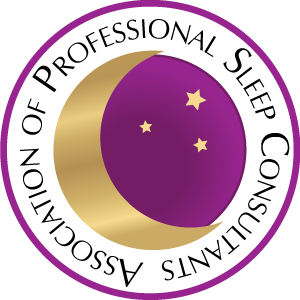A common question that I am asked is, “why does my baby take such short naps?”
There is no doubt that getting woken up constantly during the night is hard, however when your baby is taking short naps during the day, it can be just as problematic. Baby is missing out on vital sleep. Parents are missing opportunities to tend to other tasks, or just to get a little time to themselves. It can be very frustrating for all involved.
If this sounds familiar to you, let’s look a little closer at the causes of and solutions to, those short naps.
One crucial element to understand is that babies, just like the rest of us, sleep in cycles. They go from light sleep to deep sleep and back again.
There are a couple of notable differences between adult sleep cycles and baby sleep cycles. The important one in this case is the length. Baby sleep cycles are shorter. One cycle typically takes about 40-50 minutes. So now that we’ve got that established, let’s dive in!
1. The baby is not falling asleep where they are waking up
Putting baby down for naps in their bed, in their nursery, is an important step towards long, restful daytime naps.
Imagine if you fell asleep in your bedroom, and then woke up a couple of hours later in your car, or in your living room. Would you be able to fall back to sleep peacefully, or would you need some answers before you could relax again? It’s a similar scenario for babies! When they fall asleep in the car seat or pram, and then rouse slightly at the end of that first sleep cycle in a different location, they can have a very difficult time getting back to sleep.
As much as possible, get your little one into their bed whilst they are still awake. Let them fall asleep in the same spot they’ll find themselves when they wake up. Developing that association will help them get back to sleep when they wake up or start to stir after they come to the end of a cycle.
2. The baby is dependent on a ‘sleep prop’ to fall asleep
So let’s say you’re putting baby down for their naps in their bed, but you’re helping them get to sleep or even just helping them get drowsy (which is the first phase of their sleep cycle). Some common examples are rocking, shushing, singing, feeding to sleep or use of a dummy to ‘help’ a baby drift off for a nap.
Whilst these techniques might seem effective on the surface, they’re often a short-term solution to the issue. Baby gets accustomed to those ‘props’ in order to get to sleep, and soon enough, they have a hard time falling asleep without them.
So when they go down for a nap, then come to the end of that first sleep cycle, they wake up and need that prop again in order to get back to sleep. Usually if the prop is not immediately available, they can get agitated, start to cry, get themselves worked up, and then getting back to sleep is pretty much impossible.
3. The baby is overtired
Sounds contradictory, right? If baby’s tired, they’ll sleep, won’t they? Well, as with all things in parenting, it’s actually kind of complicated.
There is a common misconception that the more tired we are, the more our bodies will want to sleep. In fact, when we put off sleep and go into a state of ‘overtiredness’, our system assumes that we’re staying awake for a reason and does what it can to help us out. Our system starts bumping up our cortisol production and stopping melatonin secretion. Both of which and major hindrances to a deep, restful sleep.
We want to get baby into their bed when they’re ready for a nap. We don’t want to keep them awake much longer than that for this exact reason. I know that it can be tough to stick to a baby’s sleep schedule, but if you’re consistently seeing 30-40 minute naps, it might be time to get a little militant about your timing. At least for a couple of weeks.

4. The nap environment is not right
Daytime, simply isn’t as conducive to sleep as at night. It’s bright out, there’s traffic, your neighbours might be mowing their lawn. The postman might ring the doorbell. The dog may start barking at walkers by. We’re definitely swimming against the current when it comes to daytime sleep.
The two best pieces of advice I can give you when it comes to day time sleeps are a white noise machine (assuming environmental noise is an issue) and blackout blinds.
If you live in a quiet neighbourhood, the white noise machine is somewhat optional. People assume they have a soothing effect, but in my experience, they just help to block out sudden noises that might wake baby up.
Blackout blinds, on the other hand, I find pretty much indispensable.
Light, especially sunlight, stimulates cortisol production. We want to keep the nursery dark, and I mean dark. Like ‘can’t see your hand in front of your face’ kind of dark. The closer you can get to that, the better. Blackout blinds on the windows are a great way to do it. They don’t have to be fancy, just functional.
If you are looking for good blackout blinds, my recommendation is Sleepy Sundays.

Solving your little ones daytime sleep issues is going to work wonders for your baby’s nighttime sleep issues as well. Learning to self-soothe is a skill they’ll be able to exercise in the nighttime just as well as during the day. Great daytime sleep means baby won’t be overtired at night time. This means it will be easier for them to get to sleep at bedtime, and stay asleep throughout the night.
So there is no need to choose between nighttime wake ups and short naps.
With a little effort and determination, the only choice you’ll have to make is what to do with the free time you’ll be enjoying while your baby takes those long, rejuvenating daytime naps. Not a short nap in sight.
For personalised help to teach your little one to fall asleep independently, please reach out.






